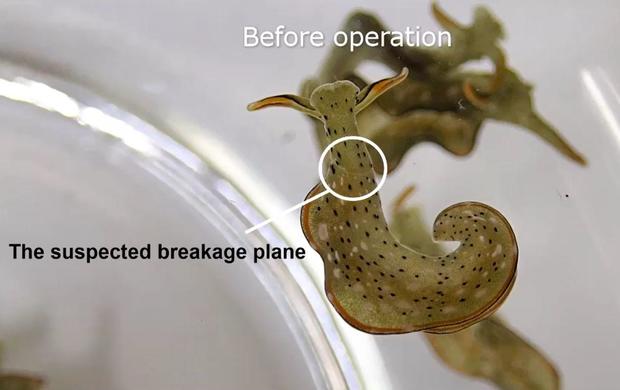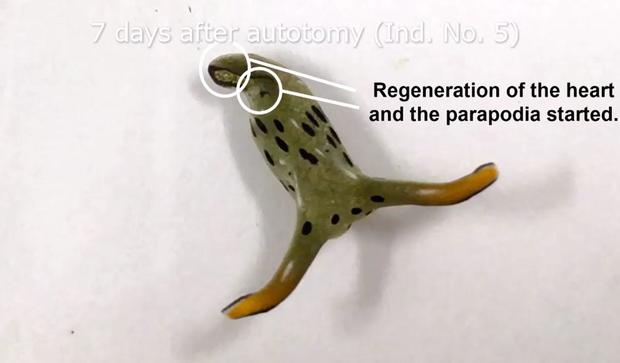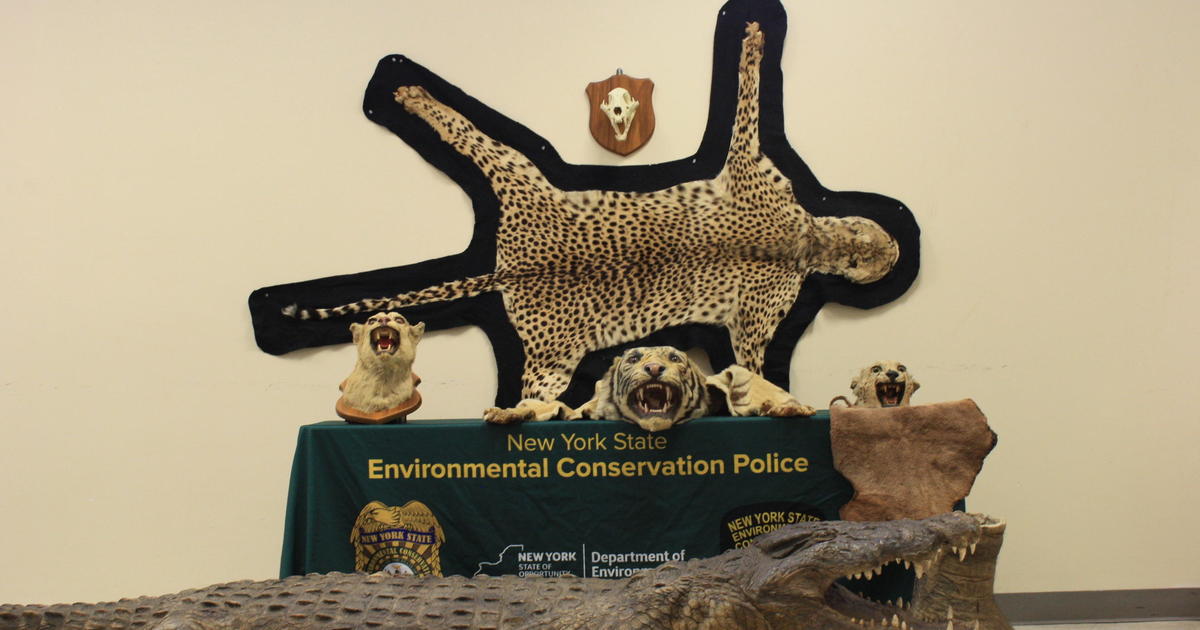Sea slugs discovered with ability to self-decapitate and grow new bodies
Tokyo — Self-amputation of body parts is well-documented in the animal kingdom: Geckos shed their tails — still wagging — as a diversion tactic when threatened. Some species of insect will sacrifice an injured leg or let go of a limb to escape a predator.
But at least two species of sea slug have astonished researchers by taking self-amputation to the extreme: It's been discovered that they can decapitate themselves, jettisoning everything but their heads, including their major body organs.
The odd behavior was spotted by Sayaka Mitoh, a doctoral researcher at Nara Women's University, who saw that a sacoglossan sea slug had separated its own head from its body.
Together with colleague Yoichi Yusa, the pair studied 15 lab-bred snails and one wild one. They noticed that the animals have grooves on their necks, "which appears to be a predetermined 'breakage plane,'" according to their research, which was published in Current Biology.
They "gently tied" a nylon thread around the snails' necks at this breakage point to prompt the self-decapitation, which takes about 20 hours, and then marveled as one-third of the creatures — their heads — continued to move around vigorously.
Within a day, their wounds had healed. In seven days, the researchers could see the heart and other vital organs re-growing in the new bodies developing from the head downward. Inside three weeks, the creatures had re-grown their bodies.
The discarded bodies, meanwhile, representing up to 85% of their original body weight, with beating hearts, kidneys and other major organs intact, gradually withered away.
"Why the head can survive without the heart and other important organs is unclear," the report said.
The researchers suggested that the snails may able to survive and regenerate by behaving like plants and synthesizing nutrients via photosynthesis.
Exactly why the snails evolved with this unique capability remains something of a mystery. They have few natural predators and the decapitation occurs too slowly to let them escape from an animal trying to eat them anyway.
The scientists suspect the real motivation is much smaller attackers, and the desire to live long and prosper: The snails may well dump their bodies to rid themselves of parasites.
"All autotomised [self-amputated] individuals had a parasite, and after regeneration they became parasite-free," wrote the researchers. "The parasites occupy most of the main body of E. atroviridis [snail species] and strongly inhibit its reproduction during lifetime. Thus, removing such parasites by autotomy likely enhances the host's reproductive success."
There's hope that the discovery may offer clues to regenerating human tissue.






